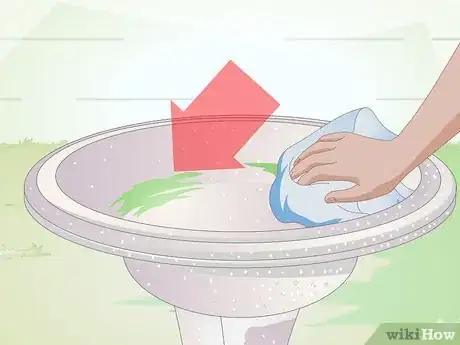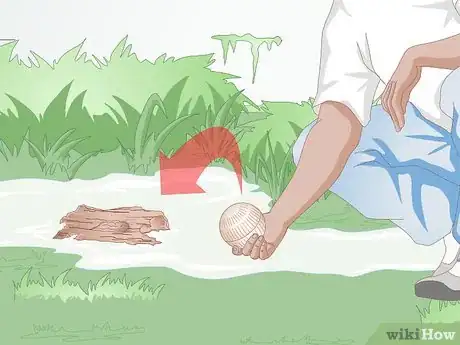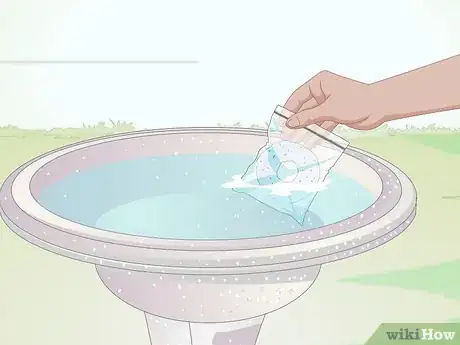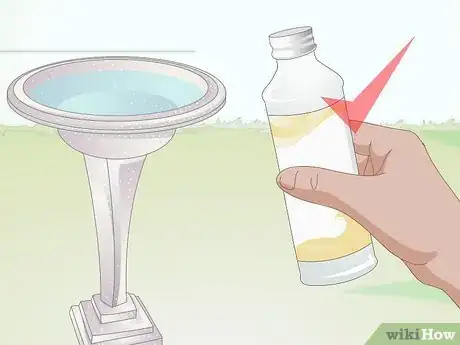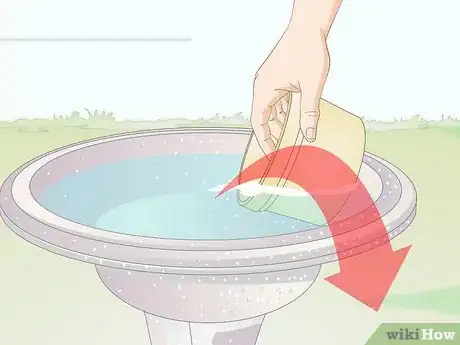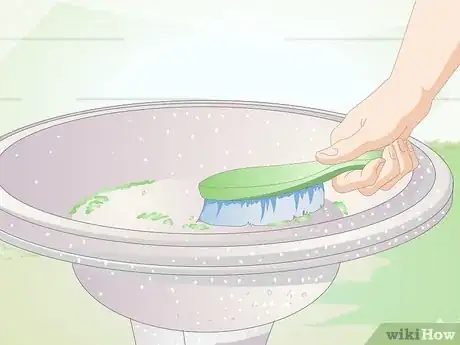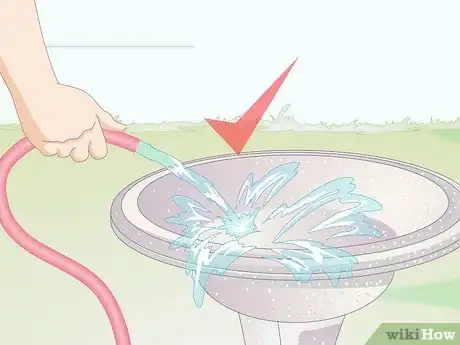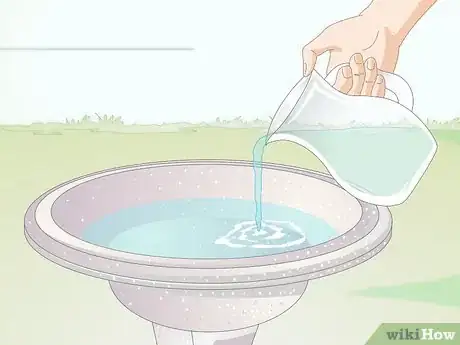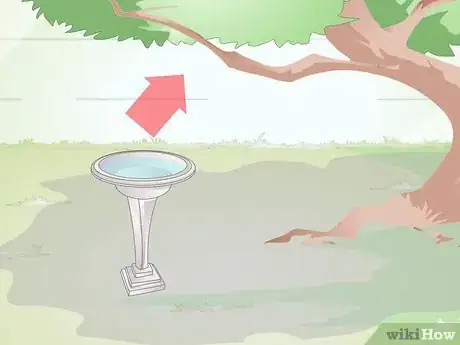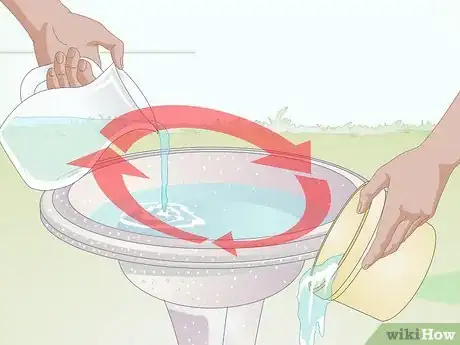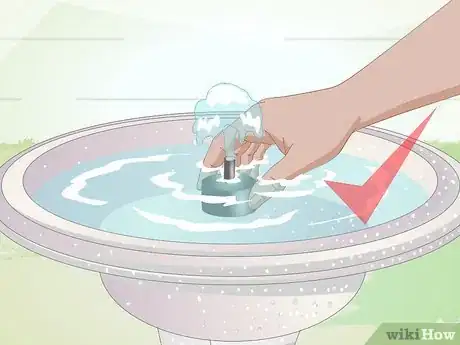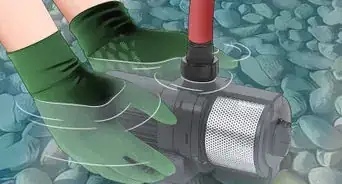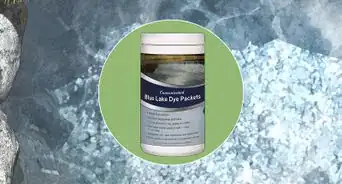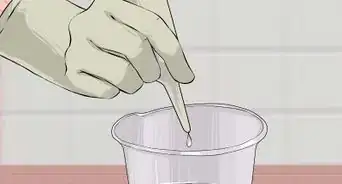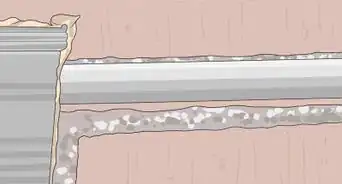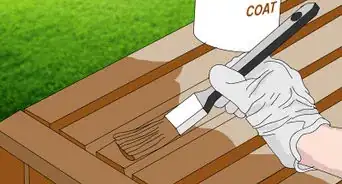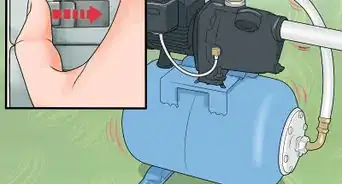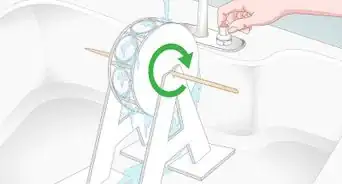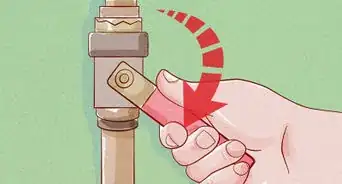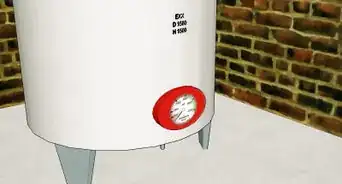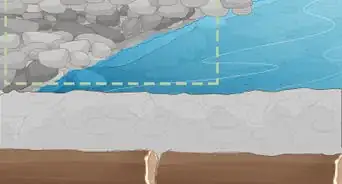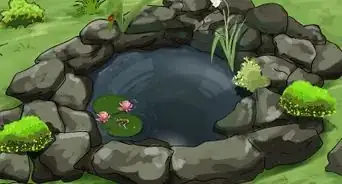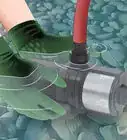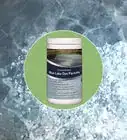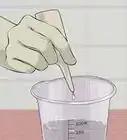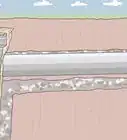This article was co-authored by Roger J. Lederer, PhD. Dr. Roger Lederer is an Ornithologist and the founder of Ornithology.com, an informative website about wild birds. Dr. Lederer has spent over 40 years teaching, studying, and writing about birds. He has traveled to over 100 countries to study birds. Dr. Lederer is an Emeritus Professor of Biological Sciences at California State University, Chico, and has been a Department Chair of Biological Sciences and Dean of the College of Natural Sciences. He has written more than 30 research papers and 10 books on birds and a textbook entitled “Ecology and Field Biology.” Dr. Lederer has consulted the BBC, National Geographic, National Public Radio, ABC News, the Guinness Book of World Records, and numerous other organizations and publications.
wikiHow marks an article as reader-approved once it receives enough positive feedback. This article received 12 testimonials and 97% of readers who voted found it helpful, earning it our reader-approved status.
This article has been viewed 266,082 times.
The existence of algae in a birdbath is common, especially since algae spores can be transferred or deposited into your birdbath by the wind, bird feet, or even from nearby trees. To prevent algae from growing in your birdbath, remove algae when you see it. Clean your bird bath regularly. You should also keep the bird bath in the shade and change the water daily.
Steps
Reducing Algae Growth
-
1Remove algae when you see it. Algae will grow unchecked if you don't remove it promptly. Spot treat algae when you see it to prevent an infestation.[1]
- If you see green algae at the bottom of a bird bath, immediately empty the water, then scrub the bird bath with a stiff brush.[2]
- From there, wipe off the algae. Then, add fresh water.
-
2Try a biodegradable ball in large ponds. If you have a large pond or bird bath, you can purchase a biodegradable ball online or at a local hardware or gardening store. These balls are designed to keep algae out of your pond. You simply need to place the ball in your large bird bath or pond after purchase. Then, you can throw the ball into your pond. It should keep algae in check for about 30 days.[3]Advertisement
-
3Dispense enzymes. Enzymes can work better as a treatment for a smaller bird baths. If you notice algae in your pool, you can purchase a disposable container of enzymes which you can place in your bird bath. This should keep your bird bath algae free for about 30 days.[4]
-
4Use a quality bird bath cleaner. Specialized bird bath cleaners can come in the form of cleansers or powders. Cleaners can be a great way to clean out your bird bath and keep it algae free. When cleaning your bird bath, consider a specialty cleaner if algae is a major problem.[5]
- Keep in mind, you can clean your bird bath with a mild detergent if algae is not a major problem.
Cleaning Your Birdbath Regularly
-
1Remove the existing water. Regular cleaning can remove existing algae from your birdbath and prevent the build up of new algae. To clean your bird bath, start by removing all the water and discarding it. You will need to replace it with new water when you're done.[6]
-
2Clean the birdbath with a small scrub brush. You will need a small scrub brush to clean out your bird bath. In most cases, it is unnecessary to use cleaner.[7] However, if your birdbath is very soiled or dirty, use a mild detergent.[8]
- Clean the bottom of the bird bath and the sides, scrubbing off any dirt, debris, or visible algae.
-
3Rinse your bird bath. It's best to use a hose to rinse off your birdbath, especially if you used detergent. Hose down the inside of your bird bath until all soap residue is gone.[9]
- It is very important to be thorough about rinsing a bird bath. Birds are very vulnerable to detergents and it can be harmful for birds if there's detergent left in the bird bath.
-
4Refill the bird bath with fresh water. Once you're done, you can refill your birdbath. Use fresh, clean water to refill the bath.[10]
Preventing Algae
-
1Keep the bird bath in shade. Algae spores transfer to your birdbath from objects that fall out of nearby trees and will grow at a faster rate when exposed to direct sunlight. To prevent the build up of algae, it's best to store your bird bath in a shaded area of your hard.[11]
- You should also keep the bird bath away from shrubs and bird feeders to prevent contamination.
-
2Change the water daily. This will help keep the water fresh and prevent algae growth from spreading within the birdbath. If you have the time to do so, add fresh water every day. Remove any visible algae when changing water in your birdbath.[12]
-
3Use running water, if possible. Pumps, drippers, and heaters that run on solar power or electric batteries are a good idea for a birdbath.[13] Running water is less likely to become contaminated with algae. If your birdbath is not already equipped with such a device, purchase one at a local hardware store and follow package instructions for set up.[14]
Expert Q&A
-
QuestionCan you paint a birdbath?
 Roger J. Lederer, PhDDr. Roger Lederer is an Ornithologist and the founder of Ornithology.com, an informative website about wild birds. Dr. Lederer has spent over 40 years teaching, studying, and writing about birds. He has traveled to over 100 countries to study birds. Dr. Lederer is an Emeritus Professor of Biological Sciences at California State University, Chico, and has been a Department Chair of Biological Sciences and Dean of the College of Natural Sciences. He has written more than 30 research papers and 10 books on birds and a textbook entitled “Ecology and Field Biology.” Dr. Lederer has consulted the BBC, National Geographic, National Public Radio, ABC News, the Guinness Book of World Records, and numerous other organizations and publications.
Roger J. Lederer, PhDDr. Roger Lederer is an Ornithologist and the founder of Ornithology.com, an informative website about wild birds. Dr. Lederer has spent over 40 years teaching, studying, and writing about birds. He has traveled to over 100 countries to study birds. Dr. Lederer is an Emeritus Professor of Biological Sciences at California State University, Chico, and has been a Department Chair of Biological Sciences and Dean of the College of Natural Sciences. He has written more than 30 research papers and 10 books on birds and a textbook entitled “Ecology and Field Biology.” Dr. Lederer has consulted the BBC, National Geographic, National Public Radio, ABC News, the Guinness Book of World Records, and numerous other organizations and publications.
Ornithologist Yes—just flush the birdbath with water every day for about a week after the paint dries to prevent chemicals from leaching into the water the birds will bathe in. You can use almost any paint that it suitable for the material the bath is made from, but marine paint is especially durable.
Yes—just flush the birdbath with water every day for about a week after the paint dries to prevent chemicals from leaching into the water the birds will bathe in. You can use almost any paint that it suitable for the material the bath is made from, but marine paint is especially durable. -
QuestionWhat kind of bird bath should I get?
 Roger J. Lederer, PhDDr. Roger Lederer is an Ornithologist and the founder of Ornithology.com, an informative website about wild birds. Dr. Lederer has spent over 40 years teaching, studying, and writing about birds. He has traveled to over 100 countries to study birds. Dr. Lederer is an Emeritus Professor of Biological Sciences at California State University, Chico, and has been a Department Chair of Biological Sciences and Dean of the College of Natural Sciences. He has written more than 30 research papers and 10 books on birds and a textbook entitled “Ecology and Field Biology.” Dr. Lederer has consulted the BBC, National Geographic, National Public Radio, ABC News, the Guinness Book of World Records, and numerous other organizations and publications.
Roger J. Lederer, PhDDr. Roger Lederer is an Ornithologist and the founder of Ornithology.com, an informative website about wild birds. Dr. Lederer has spent over 40 years teaching, studying, and writing about birds. He has traveled to over 100 countries to study birds. Dr. Lederer is an Emeritus Professor of Biological Sciences at California State University, Chico, and has been a Department Chair of Biological Sciences and Dean of the College of Natural Sciences. He has written more than 30 research papers and 10 books on birds and a textbook entitled “Ecology and Field Biology.” Dr. Lederer has consulted the BBC, National Geographic, National Public Radio, ABC News, the Guinness Book of World Records, and numerous other organizations and publications.
Ornithologist A bird bath shouldn't be too deep—about 3 inches is perfect. It should also be made of a rough surface so the birds don't slip. Birds especially like baths with running water, so if you'd like, you can use a garden hose with a drip nozzle or you can choose a solar-powered bird bath that sprays or trickles water.
A bird bath shouldn't be too deep—about 3 inches is perfect. It should also be made of a rough surface so the birds don't slip. Birds especially like baths with running water, so if you'd like, you can use a garden hose with a drip nozzle or you can choose a solar-powered bird bath that sprays or trickles water.
Warnings
- Do not use bleach in your birdbath because it may potentially harm the birds and other animals that visit your birdbath.⧼thumbs_response⧽
References
- ↑ http://www.birds.cornell.edu/AllAboutBirds/notes/BirdNote09_ProvideWater.pdf
- ↑ Roger J. Lederer, Ph.D. Ornithologist.
- ↑ http://www.gardeners.com/how-to/how-to-keep-water-clear/7644.html
- ↑ http://www.gardeners.com/how-to/how-to-keep-water-clear/7644.html
- ↑ http://www.gardeners.com/how-to/how-to-keep-water-clear/7644.html
- ↑ http://www.drsfostersmith.com/pic/article.cfm?aid=707
- ↑ Roger J. Lederer, Ph.D. Ornithologist.
- ↑ http://www.drsfostersmith.com/pic/article.cfm?aid=707
- ↑ http://www.drsfostersmith.com/pic/article.cfm?aid=707
- ↑ http://www.drsfostersmith.com/pic/article.cfm?aid=707
- ↑ http://empressofdirt.net/bird-bath-safety/
- ↑ http://empressofdirt.net/bird-bath-safety/
- ↑ Roger J. Lederer, Ph.D. Ornithologist.
- ↑ http://empressofdirt.net/bird-bath-safety/
About This Article
To keep algae from growing in a birdbath, change the water daily to keep it fresh and prevent algae from spreading. You can also add a pump or dripper to the water to keep the water moving around and make it harder for algae to grow. If you’re still finding algae in your birdbath, try adding enzymes to the pool each month or using a high-quality bird bath cleaner when you wash it. For tips on how to deep-clean your birdbath if algae is a problem, read on!
